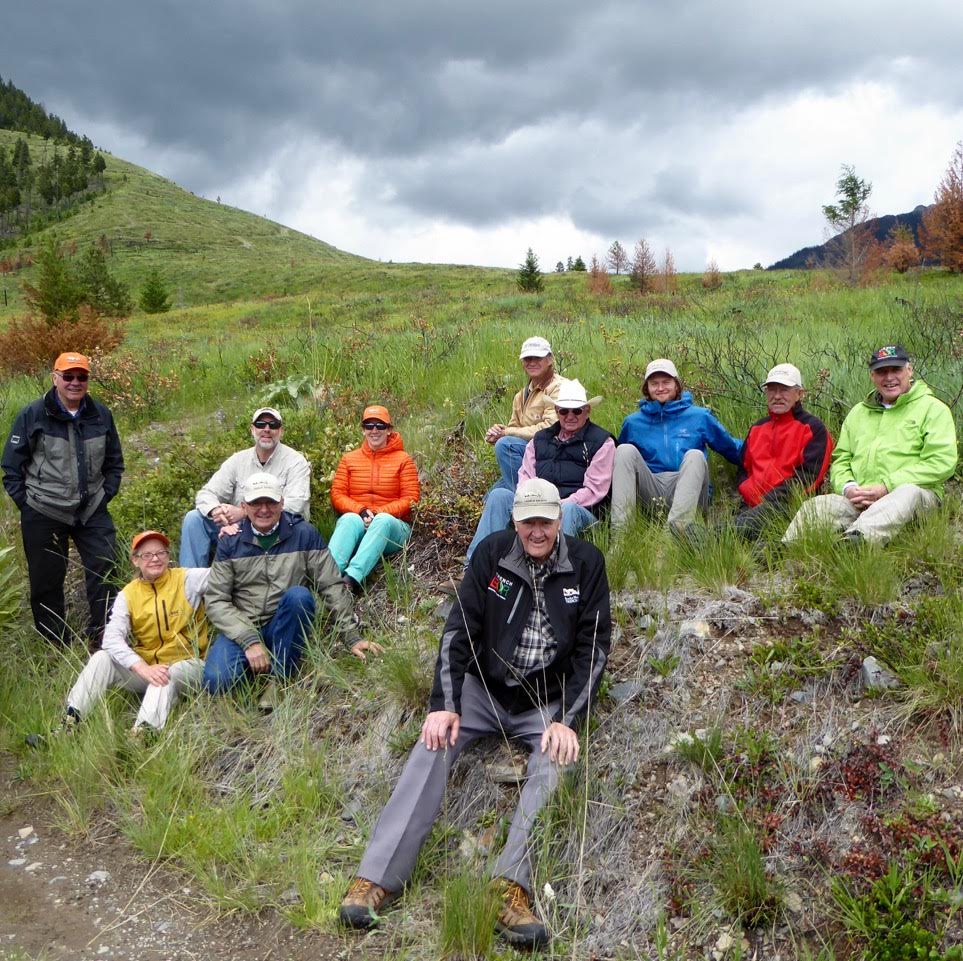There is a magic to the golden grasses of the Rocky Mountain Trench. Prairie-esque, the rolling grasslands between the Rocky Mountain and Purcell Mountain ranges are the first place to burst into colour in the spring when crocuses and spring beauties dot the landscape and bluebirds fill the air with their song. They provide critical winter range to ungulates, are home to many unique and endangered species like the Lewis’ Woodpecker and the badger, and are key wildlife corridors for wildlife moving across the landscape. A fire-maintained ecosystem, the grasslands of the Trench depend on wildfire to renew and to keep back forest in-growth. The historical trend towards increased fire suppression combined with the increasing human footprint of development, ranching and recreation make the grasslands of the Trench one of the most impacted ecosystems in the Kootenays.
Twenty years ago, the Rocky Mountain Trench Society formed as a coalition of hunters, ranchers, naturalists and environmentalists passionate about protecting and restoring the grasslands. Twenty years later, at our Annual General Meeting’s field tour, we celebrated all that we’ve accomplished together.
The Trench Society brings together 11 member organizations, including the Cranbrook Archery Club, Cranbrook Community Forest Society, East Kootenay Invasive Species Council, East Kootenay Wildlife Association, Kootenay Livestock Association, Rocky Mountain Naturalists, Southern Guides and Outfitters, the Land Conservancy, Waldo Stockbreeders Association, the Windermere District Farmers Institute and Wildsight.

Standing on the hillsides of Brewery and Lakit ridges, we toured the recent Rocky Mountain Bighorn Sheep habitat enhancement. The spring burn by BC Wildfire Service had done wonders, and the grasses were in full green-up, dotted with wood lilies and mariposa lilies. Carried out in partnership with the Fish and Wildlife Compensation Program, the Rocky Mountain Trench Society, the ER Steering Committee and the BC Wildfire Service, the project is but one in the larger matrix of ecosystem restoration efforts taking place throughout the region. The Rocky Mountain Trench Ecosystem Restoration Program (ER program) is a model for ER programs across the province. Together, we’ve returned more than 20,000 hectares to grasslands and open forests.
As we stood there, I couldn’t help but think: this is what conservation looks like. Diverse stakeholders coming together through a shared set of values. Whether you look at the grasslands and see wildlife habitat, range for cattle grazing or fire guard for our communities, it is clear that grasslands are important. Representing Wildsight in the Trench Society has helped to show me what we can accomplish when we all work together.
Read our Blueprint for Action, Progress and Learnings that highlights our first 15 years of successes and challenges.


